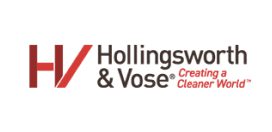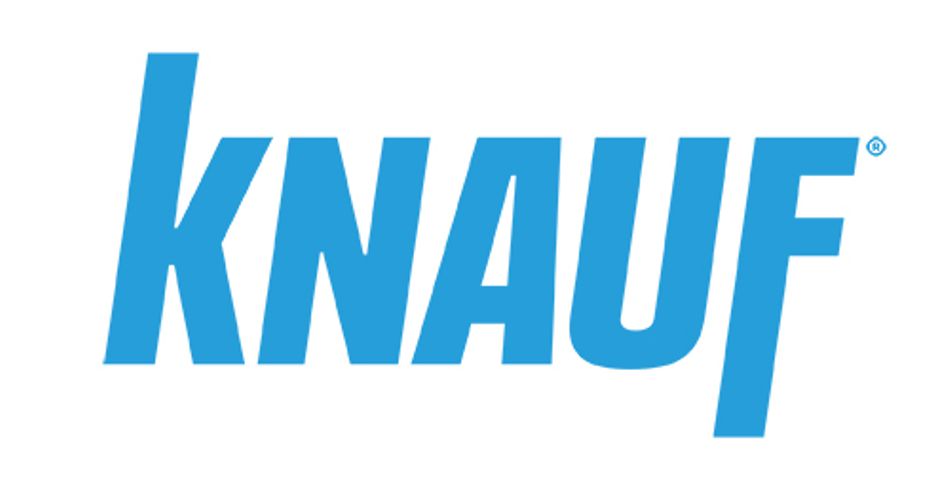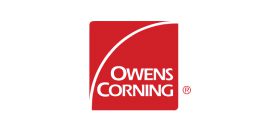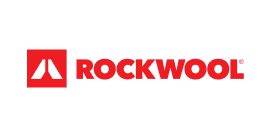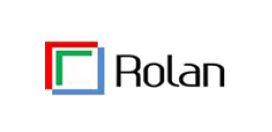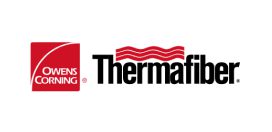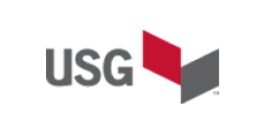”General FAQs″
–+Q. How much insulation do I need for my attic, walls, etc. if I live in ____________?
A. The amount of insulation your home needs depends on where you live. Use this climate zone map to determine what climate zone you are located in and find the corresponding amounts of insulation necessary for your home.
Q. My contractor is suggesting insulation A, but I feel differently. What type of insulation do I need?
A. Check out our insulation comparison page.
Q. Do I need a vapor barrier?
A. Vapor retarders are typically recommended for the interior side (i.e., the “warm in winter” side) of above-ground framed walls in your home such as bedrooms, bathrooms, garages and attics. A vapor retarder is not required for basement walls, walls made of materials that can’t be damaged by moisture or freezing, or any parts of walls that are below ground.
Q. What do I do if my insulation gets wet?
A. Please refer to our page on preventing moisture issues.
Q. Are fiberglass and mineral wool insulation safe?
A. The fiberglass and mineral wool products used in residential applications today are safe for use when recommended work practices are followed. For detailed information on the health and safety of fiberglass and mineral wool, please visit our Health & Safety section of the website.
Homeowner FAQs″
–+Q. Which type of insulation do I need?
A. The type of insulation you need depends on where it will be installed, what R-values are required and your budget. Where you live also affects which insulation you choose. For example, a home in Arizona will have different minimum R-value requirements than one in Minnesota. Check with your local building codes.
Q. What is blown-in loose fill fiberglass?
A. Blown-in loose fill fiberglass is typically used in unfinished attics, nonconforming spaces and hard-to-reach areas such as corners, edges and around framing. This type of insulation requires a blowing machine for installation.
Q. What is mineral wool?
A. Specifically designed to deliver robust sound dampening, exceptional fire resistance and superior temperature control, it is most commonly installed in wood-stud cavities of interior and exterior walls, basements, ceilings, floors and crawl spaces.
Q. What is R-Value?
A. “R” stands for resistance to heat flow. The higher the R-value, the greater the insulating power and resistance to heat flow. Depending on where you live and what area of your home you are insulating, different R-values are recommended. For example, a colder climate requires higher R-values than a milder, more temperate one. R-values may be added together for increased thermal resistance.
Q. What is facing?
A. A material — either kraft paper or plastic — is attached to the fiberglass insulation to help control moisture, mold and draft. Facing can also be applied separately from the insulation.
Q. How can I reduce moisture in my home?
A. Using insulation with a vapor retarder or adding one to existing insulation helps keep the moisture inside your home from escaping and condensing in insulated cavities, which can cause mold and mildew. Check your local building codes for vapor retarder requirements.
Q. What is the difference between unfaced and kraft-faced insulation?
A. Unfaced means the insulation lacks a vapor retarder (paper or plastic facing). Kraft-faced insulation includes a paper vapor retarder, which helps prevent mold and mildew. Check your local building codes for vapor retarder requirements.
Q. Does fiberglass support mold growth?
A. Unlike organic insulations, fiberglass does not offer an ideal environment for mold growth. The smooth, inorganic surface of the glass fibers is not conducive to promoting life.
Q. How often does insulation need to be replaced?
A. Fiberglass is designed for longevity and permanence, and, with the exception of unusual circumstances (like floods, leaks, fires or poor maintenance), it maintains its insulating properties and rarely needs to be replaced. When our fiberglass products are installed and properly maintained, they do not compress, settle, or erode over time, retaining their thermal performance.
Q. Are fiberglass and mineral wool fire resistant?
A. Both fiberglass and mineral wool are naturally non-combustible. For additional information on fire safety of various insulation products, please refer to our product comparison page
Builder & Building Professional FAQs″
–+Q. What is an STC rating?
A. An STC (Sound Transmission Class) rating is a number rating of an assembly’s ability to withstand airborne sound transfer at different frequencies. Generally, a higher STC rating will block more noise from transmitting through a partition wall or ceiling.
Q. What is the recycled content of fiberglass/mineral wool insulation?
A. Fiberglass insulation – contains 40-60% recycled content, depending on the manufacturer and specific facility
Mineral wool insulation – rock wool insulation contains an average of 10-15% recycled blast furnace slag and slag wool insulation contains 70-75% recycled blast furnace slag
Q. How do I reach a RESNET Grade I install with batt insulation?
A. Follow these guidelines for Grade 1 installation and watch the video tutorials.
Q. How do I cut insulation batts?
A. To cut insulation, lay it on a board with the kraft or foil facing down, if applicable. Lay a yardstick (or 2 x 4) over the area of insulation to be cut. Press your straight edge down hard and cut with a utility knife, using the straight edge as a guide.
Q. What are commercial and industrial applications for insulation?
A. Insulation products for commercial and industrial applications fall into three categories:
- Mechanical insulation
- HVAC insulation
- Insulation for metal buildings
Q. What are types of air duct insulation products?
A. There are three types of air duct insulation:
Duct Board
Widely used in residential and light commercial HVAC systems, Air duct board provides duct construction and insulation in a single step.
Duct Liner
Duct liner is adhered to the inside of a sheet metal duct or plenum, and combines superior sound absorption and excellent thermal conductivity.
Duct Wrap
Duct Wrap is a flexible and resilient blanket available in various thicknesses and densities used to insulate the exterior of sheet metal ductwork. Duct wrap reduces heat loss or gain, conserves energy and controls moisture condensation.
Q. What is metal building insulation?
A. Metal Building insulation is engineered specifically for metal building construction. It is fiberglass blanket insulation that can be faced, or unfaced, depending on where it is used in the building. It is manufactured in lengths and widths to specifically fit between the steel girt and purlins found in metal construction. Metal building insulation controls heat flow, absorbs noise, prevents condensation and increases lighting efficiency
Pipe Insulation and 3E Plus® FAQs″
–+Q. Why did NAIMA develop 3E Plus®?
A. NAIMA developed this program to simplify the task of determining how much insulation is necessary to use less energy, reduce plant emissions and improve process efficiency.
Q. Is 3E Plus® difficult to use?
A. NAIMA developed 3E Plus® for facility managers, energy / environmental managers, industrial process engineers, and industrial plant managers. Those individuals familiar with manual calculations to determine insulation thickness, should find that the program has an intuitive interface. In addition, the National Insulation Association (NIA), has developed an accreditation program called the NIA Insulation Energy Appraisal Program, which offers a standardized approach to conducting insulation energy appraisals. This program uses 3E Plus® as part of its core curriculum. NIA also has a seminar specifically on 3E Plus®. Learn more and register for the NIA trainings here.
Q. Does 3E Plus® work with the Macintosh OS?
A. No, 3E Plus® is available for the Windows® XP, Vista and Windows® 7 environments.
Q. Does 3E Plus® work with the VISTA OS and Windows® 7 OS?
A. Yes, 3E Plus® works with Windows® XP, Vista and Windows® 7 environments.
Q. Why do I need to re-register for updated versions of 3E Plus®?
A. We send out updates to the 3E Plus® program regularly to registered users via email. The re-registration process assures us we have your most recent email. Your email will not be used for any other reason than communicating about updates to the software.
Q. Does 3E Plus® calculate metric measurements?
A. Yes, 3E Plus® calculates in both metric and inch-pound units.
Q. Where can I get training on 3E Plus®?
A. With NAIMA’s assistance, the National Insulation Association (NIA), has developed an accreditation program called the NIA Insulation Energy Appraisal Program, which offers a standardized approach to conducting insulation energy appraisals. This program uses 3E Plus as part of its core curriculum. NIA also has a seminar specifically on 3E Plus. Learn more and register for the NIA trainings here.
Q. I am having trouble installing or downloading the 3E Plus® program.
A. Network users may want to consult their IT staff to make they are not restricted from either downloading programs online or installing programs on their local computers. Another problem that can occur with downloaded files is corruption of the file during the download process. Users who encounter problems may want to delete the file and try again. Also, the program must be installed and run with the language set for English (United States). This is done by going to the “control panel” and opening the “Regional and Language Options” and under the Regional Options tab, set for English (United States).
Note: Because NAIMA is a non-profit organization, we do not have a help desk for this product. We encourage users to try to troubleshoot on their own. On your first run of the program after installation, enter the access code 3EPlus4.1 (case sensitive, no spaces) and then click OK.
Q. How do I uninstall 3E Plus®?
A. If you have an earlier version of 3E Plus® installed, you must uninstall prior to installing the current version. Make sure you have your customized user added information printed out before uninstalling the earlier version of the program. You will need to input the data into version 4.1. If you are not familiar with uninstalling software programs on your computer, contact your IT department or computer support professional.
Note: When upgrading from 4.0 to 4.1, the user must manually save all user input data. Refer to the User Guide for complete details.
Q. Will my customized data be saved when I uninstall an older version and reinstall a newer version?
A. Beginning with version 4.1 customized “user added” program details such as insulation materials, jacketing, fuel types and base metals can be saved and easily imported when updating the program. If you are updating from an earlier version to 4.1, make sure you have your customized user added information printed out before uninstalling the earlier version of the program. You will need to input the data into version 4.1. Refer to the User Guide for complete details.
Q. How much does 3E Plus® cost?
A. The program is free. We do require a simple registration, so that we may notify you as upgrades are implemented. We will not use your email address to market to you in anyway. Download the current version of 3E Plus®.
Q. I’m getting a message “An error has occurred while opening job information. 13: Type mismatch” What should I do?
A. For proper operation of 3E Plus® on non-English systems, under your operating system choose: “settings > control panel > regional options” and select “English (United States)”.
Q. When installing the program, I get warnings like these:
- An error occurred while loading material data.
- An error occurred loading the dropdowns.
- An error has occurred while opening job information.
A. The problem you are having is because the program uses standard US notation and the “Regions and Settings” must be set to “English (United States)”. Follow these instructions to fix the problem:
- Go to “Control Panel” then “Region and Settings” on the “Formats” tab – check that it is set to “English (United States)”
- After setting to “English (United States)”, uninstall the program.
- Temporarily turn off your firewall and antivirus software.
- Reinstall the 3E Plus® program while set to “English (United States)”. You can switch back to your region’s settings afterward – but the computer must be set to “English (United States)” when installing and running the 3E Plus® program.
- Turn your firewall and antivirus software back on. The problem you are encountering is because program uses standard US notation e.g. 75.7 not 75,7
Please review the installation directions in the user guide.
Q. Why can’t I input the thermal conductivity in SI units when adding an insulation material to the program using the ‘options’ features?
A. Currently the only way to input the thermal data for insulation and fuel under the “options” tab is to use IP units. We recommend either asking the insulation manufacturer for the thermal conductivity data in IP units most should have it. Or, if that data is not available, you will need to convert the thermal conductivity data in SI units (W/mK) to IP (Btu·in/hr·ft2·°F).
Quickly convert thermal conductivity in SI to IP units for use in the program. Use the Btu (IT) as opposed to the (th) because it is the (IT) value which is in the 3E program.




